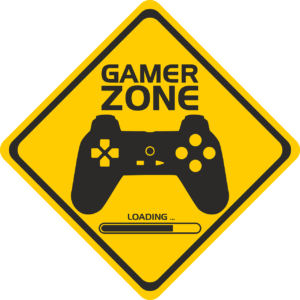
Despite the actual diversity of gamers, video games have stereotypically been regarded as a “boy’s toy”. This characterization is rooted in the stereotype of the “gamer” (which is in and of itself under debate in terms of its true meaning) and has been linked to some of the worst behaviours within online gaming communities that live under the heading of “toxic gamer culture.”
This term, used as early as 2012, broadly refers to malicious behaviours perpetrated by gamers towards other gamers, such as trolling, doxxing, and harassment. Research published earlier this year by the ADL noted that 65% of online players have experienced some form of severe harassment, such as physical threats, stalking, and sustained harassment. Additionally, 53% of the players who have experienced harassment believed they were targeted because of their race/ethnicity, religion, ability, gender, or sexual orientation. Researchers believe that toxic gamer culture first emerged due to the perceived “encroachment” of women and girls in to gaming cultures, which as we mentioned above, is a stereotypically considered a male space. There have been many articles written exploring the emergence and persistence of these kinds of behaviours within gaming spaces.
The impact of harassment within gaming cultures was one of the topics explored in the Take This White Paper published earlier this year. Harassment of players and game developers can contribute to short term increases in stress, anxiety, and loneliness, as well as long-term consequences such as Post-Traumatic Stress Disorder. An ADL research study noted that harassed players become less social and feel increasingly isolated as a result of in-game harassment. Furthermore, they found that 1 in 10 players reported depressive or suicidal thoughts as a result of harassment in online games.
New research was released last month indicating that toxic in-game behaviors (specifically, sexual harassment) are connected to a specific personality profile: players who believe males are superior to females, seek to manipulate others, and exhibithigh levels of impuslivity, thrill-seeking, and callousness. They also found that gamer identity (that is, self-identifying as a member of the gaming community) was a significant predictor of sexual harassment perpetration. As discussed by the researchers:
“This supports existing video game research that the gamer identity is associated exclusively to heterosexual masculinity. As the gamer identity…is exclusively masculine, this suggests no allowances for feminine identity and by extension, any nonhetero identities.”
Thus, despite the fact that gamer cultures originated as a niche subculture for individuals who felt distant from mainstream cultures (e.g., arcade goers), and the fact that females constitute almost half of the gaming community today, non-masculine and non-hetero identities have largely remained unincoportated into the shared social and cultural gamer identity.
It is important to note that change – especially cultural change – is slow. However, over the last decade, we have witnessed a push for games to become more inclusive and welcoming spaces for all. We see this in the development of strong, (not oversexualzed) female protagonists, such as in The Last of Us (Naughty Dog), Alice: Madness Returns (Spicy Horse), Gone Home (Fullbright), and Zero Dawn (Guerrilla Games). During this time, we have also seen the development of less traditional male characters, such as Kanji in Persona 4 (Atlus) and Theo in Celeste (Matt Makes Games). Many games have also started to include gender neutral player customization options (e.g., Fortnite [Epic]) and the inclusion of non-hetero romance options (e.g., Assassins Creed Odyssey [Ubisoft], The Sims [EA], Dragon Age [Bioware]). Additionally, new communities have emerged celebrating diversity within gaming cultures, with a specific focus on those who do not fit the “masculine/hetero” prototype, such as I Need Diverse Games, GaymerX, Black Girl Gamers, Real Women of Gaming, PMS Clan, BeastCoast, and Global Gaming Women.
While there is still a long way to go to change gaming cultures on a broader level, the key to this change is advocacy from game developers, organizations, and communities (like the ones listed above). However, the researchers believe that advocacy from individual players is perhaps the most powerful tool. As the newly published research notes,
“…as gamers identity with other gamers, this means that influential individuals, such as game developers, gaming journalists, gaming youtubers, or professional gamers among others, would have significant persusasive influence, where they communicate to their audience that they do not tolerate sexual harassment behaviours.”
Understanding why harmful and hurtful behaviours occur and how to reduce them in the shared gaming spaces we love is the first step towards changing these communities to be a more inclusive and welcoming space for us all. However, championing others through inclusive game development, communities, and cultures is how we shift the cultural norms within games and gaming.
This article is not a substitute for medical advice or professional counseling. While we at Take This want to provide you with resources, we do not recommend or endorse any particular site, treatment, therapy, or resource. We provide these links at our sole discretion but have not necessarily vetted or reviewed any particular resource. We assume no liability for the use of the information or resources on these sites and encourage you to use your own best judgment when reviewing these resources.
If you live in the US and you’re having suicidal thoughts, reach out to the Suicide & Crisis Lifeline or call/text 988. If you’re outside the US, you can find local crisis lines at Suicide.org. If you’re even debating whether you should call them, you should call them. The Suicide & Crisis Lifeline handles all psychological crises, not just suicide.
